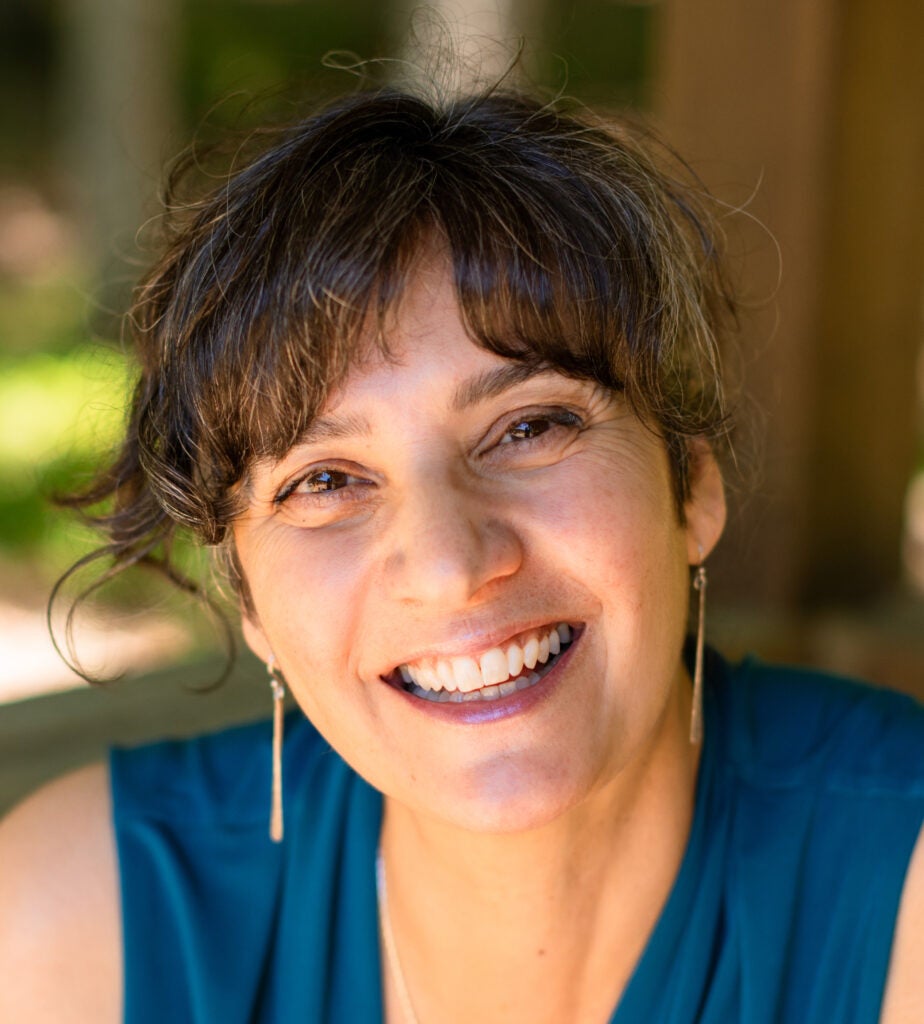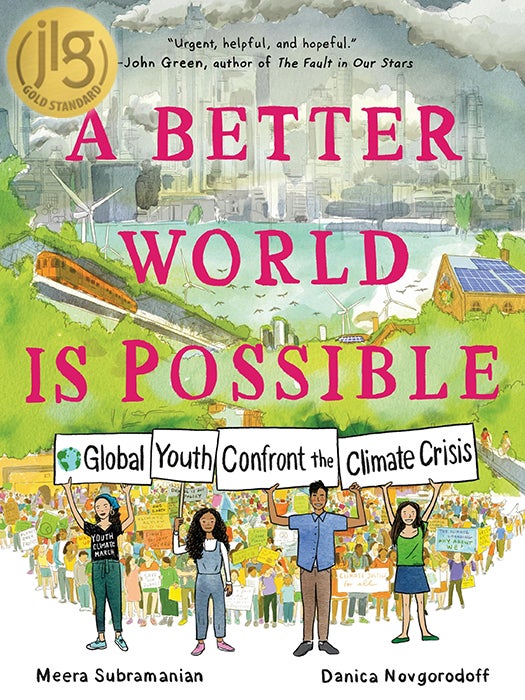About Meera
Meera Subramanian is an award-winning freelance journalist who writes narrative nonfiction about home–in the personal and planetary sense–in a time of climate crisis. Her work has appeared in publications such as Nature, The New York Times, The New Yorker, Virginia Quarterly Review, and Orion, where she is a contributing editor. Her first book was A River Runs Again: India’s Natural World in Crisis, which was short-listed for the 2016 Orion Book Award. A Metcalf alum, Meera was an Annual Science Immersion Workshop for Journalists fellow in 2012 and participated in a Science Seminar for Journalists in St. Louis in 2015.
Meera’s latest book, A Better World Is Possible: Global Youth Confront the Climate Crisis, comes out March 3, 2026, from First Second, an imprint of Macmillan Publishers. She worked with New York Times best-selling illustrator Danica Novgorodoff on this graphic novel that shares experiences from their lives and the lives of four youth activists who’ve witnessed climate change up close – from wildfires in the Pacific Northwest to floods in Bangladesh.


Meera spoke with Metcalf’s Fara Warner and Mel Thibeault about her new book, what she remembers most about Metcalf, and what’s giving her hope right now.
Tell us about your forthcoming graphic novel, A Better World Is Possible: Global Youth Confront the Climate Crisis?
MS: [My] next project after years of work is a nonfiction graphic novel for a young adult audience that focuses on four real-life youth climate activists. I have been working on this with illustrator Danica Novgorodoff, and it’s been so much fun. I was ready to do something totally different, and this was a delightful way to bend my brain and tell stories in a different way.
Danica was at the climate strike in New York City in late 2019, so we zeroed in on that as our narrative anchor. All four of the kids featured were organizers of that [event] on different levels. As they’re introduced, we flashback to all of the reasons why these young people found themselves on stage talking to thousands of people in New York City.
Throughout the book, there are interludes where we pause the storytelling and drop in the science, to make it most accessible. We go through what fossil fuels are and what extreme weather events are. What is environmental justice? What does religion have to do with it? It gets into the misinformation and disinformation campaigns that have happened. The end interlude is about solutions, so you come out with all the things that can be done right now.
[The book] is written for a high school level, but we tried to make it so a fifth-grader could pick it up and follow it. Hopefully there will be adults who can learn something, too. It gets into the weeds in the science, but it tries to do it in a really accessible way. We tried to make it something you could read at multiple levels.
We also have a website. We’ve got tons of resources, so there’s a place where kids and their parents, guardians and grandparents can all go and learn more.
Why is this work so important, especially right now?
MS: We keep hearing that kids are not reading as much. Readership in general is going down. Attention spans are going down. There was a little bit of an element of … how can we meet people where they are? Which is what climate communication is all about. Kids love graphic novels. Even adults love graphic novels.
Climate [change] can feel intimidating, and I think that’s a lot of the reason why people of all ages are less engaged. It feels really important to try to bridge that divide. And that’s what Metcalf is all about. How do we teach scientists and journalists to communicate all this stuff that’s going on that, we admit, can be complicated? Storytelling, of course, is the way to do that.
I’m also dealing with my own cynicism after doing this for 20 years and feeling frustrated, watching a lot of the work that’s been done be undone. As a writer [I wanted] to try to reignite my own energy while also making it easier for young people to feel inspired. Figuring out how to enter this space and not be intimidated is really important. Any tools that we can give them or stories that show what’s possible and that people of any age have power to join in doing this work and that they can find it fulfilling and find community, whether battles are won or lost.
What’s giving you hope these days?
MS: It gave me hope learning these kids’ stories; they’re really amazing. There are these powerful young people, and there’s a lot of them. It’s also recognizing that so much is about finding communities to band together for whatever is coming because a lot is coming. We’re already seeing it. The mis- and disinformation has been very effective and the effects of the climate crisis are more real every day.
I’ve been spending some time in Spain, reporting about renewable energies. It was amazing traveling to these rural areas where they’re like ‘yeah, it’s an issue. We’re feeling the impact right now. We have responsibility … We’re putting up solar panels.’ It was nice to get out of the U.S. – which is so antagonistic and hyperpolarized right now – and remember that there are other places in the world where addressing climate change can be something that the communities and nations support enthusiastically. And by the way, their economy is doing great.
How has your experience with Metcalf impacted you and your career?
MS: The most exciting thing was just the hands-on science that I did at [the Annual Science Immersion Workshop for Journalists]. I had a decent grasp on the science but that really upped my game. Metcalf gave me the confidence that I was heading in the right direction, and then gave me all the tools to step that up even further.
In St. Louis, I did a climate adaptation workshop as well. Elizabeth Rush and I were put in the same room. She was just starting to work on her book, “Rising: Dispatches from the New American Shore.” We’re still in touch after making that initial connection through Metcalf. The science education is huge, but so are the human connections that are being fostered by bringing people who care about these issues together. We end up supporting each other throughout our careers.
What do you remember most about your time with Metcalf?
MS: The very first thing that comes [to mind] is looking at an octopus under the microscope! And then there was this one moment where we met with scientists to dissect how to read a scientific paper, and I remember when the scientist said, ‘you got this.’ It was a really informal comment, but it gave me a confidence I didn’t have before.
Interestingly, I just did a fellowship in Spain, and we came together for a two-day workshop; half of it was about AI and using AI programs to read papers. I was like, ‘Nope. Metcalf helped me read papers. I don’t need this tool.’
[Metcalf] has a finger on the pulse of what’s coming next. I think I learned about PFAS and microcontaminants through some of the lecture series; there were things that were not on my radar as an environmental journalist that I got on my radar there, and those things have become big, big stories.
Keep doing what you’re doing.
This interview has been edited for length and clarity. Find more of Meera’s work on her website. You can preorder A Better World Is Possible: Global Youth Confront the Climate Crisis here.
